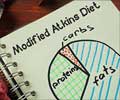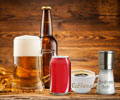
Resistance exercise allows astronauts to "lift weights" in weightlessness.
They compared data measured from 2006 until the new device arrived, when astronauts used an interim workout that offered about half the total resistance of the ARED.
The researchers found that astronauts using the advanced exercise system returned to Earth with more lean muscle and less fat, and maintained their whole body and regional bone mineral density compared to when they launched.
Crew members using ARED also consumed sufficient calories and vitamin D, among other nutrients. These factors are known to support bone health and likely played a contributing role.
"After 51 years of human spaceflight, these data mark the first significant progress in protecting bone through diet and exercise," Scott M. Smith, NASA nutritionist at the agency's Johnson Space Center in Houston and lead author of the publication, said.
Advertisement
As long as these processes are in balance, bone mass and density stay the same. Earlier studies of Russian Mir space station residents found an increased rate of breakdown, but little change in the rate of re-growth that resulted in an overall loss in bone density.
Advertisement
In crew members who used the ARED device during spaceflight, bone breakdown still increased, but bone formation also tended to increase, likely resulting in the maintenance of whole bone mineral density.
"The increase in both bone breakdown and formation suggests that the bone is being remodelled, but a key question remains as to whether this remodelled bone is as strong as the bone before flight," Dr. Jean Sibonga, co-author of the study, said.
The study has been published in the Journal of Bone and Mineral Research.
Source-ANI















